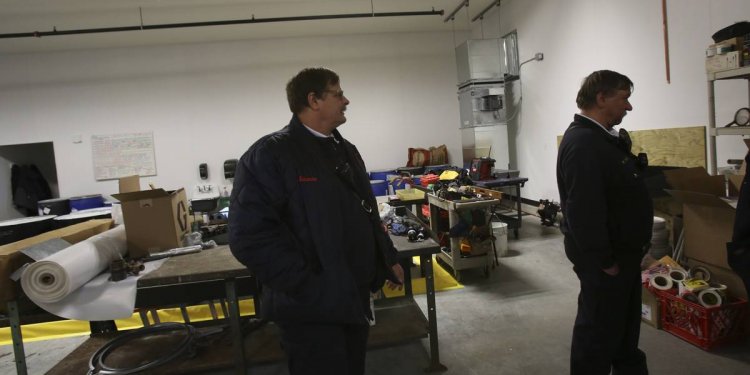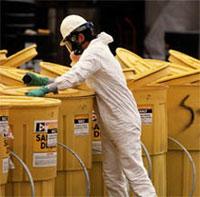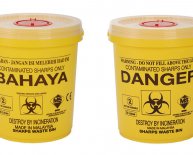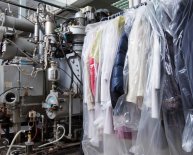
Hazardous Waste Disposal Containers
What is a Hazardous Waste Management Facility?
Hazardous waste management facilities receive hazardous wastes for treatment, storage or disposal. These facilities are often referred to as treatment, storage and disposal facilities, or TSDFs, and their activities are described in more detail below:
- Treatment – Using various processes, such as incineration or oxidation, to alter the character or composition of hazardous wastes. Some treatment processes enable waste to be recovered and reused in manufacturing settings, while other treatment processes dramatically reduce the amount of hazardous waste.
- Storage - Temporarily holding hazardous wastes until they are treated or disposed. Hazardous waste is commonly stored prior to treatment or disposal, and must be stored in containers, tanks, containment buildings, drip pads, waste piles, or surface impoundments that comply with the Resource Conservation and Recovery Act (RCRA) regulations. The regulatory requirements for these types of storage units are found in title 40 of the Code of Federal Regulations (CFR) in:
- Disposal - Permanently containing hazardous wastes. The most common type of disposal facility is a landfill, where hazardous wastes are disposed of in carefully constructed units designed to protect groundwater and surface water resources.
What is a Hazardous Waste Management Unit?
Under RCRA, Congress authorized EPA to promulgate regulations establishing design and operating requirements for hazardous waste management units. The requirements are intended to protect human health and the environment from the risks posed by hazardous waste.

Containers
A hazardous waste container is any portable device in which a hazardous waste is stored, transported, treated, or otherwise handled. The most common hazardous waste container is the 55-gallon drum. Other examples of containers are tanker trucks, railroad cars, buckets, bags, and even test tubes.
Tanks
Tanks are stationary devices constructed of non-earthen materials used to store or treat hazardous waste. Tanks are constructed of a wide variety of materials including steel, plastic, fiberglass, and concrete.
Drip Pads
A drip pad is an engineering structure consisting of a curbed, free-draining base, constructed of non-earthen materials, and designed to convey wood preservative chemical drippage from treated wood, precipitation, and surface water run-on to an associated collection system at wood preserving plants.
Containment Buildings
Containment buildings are completely enclosed, self-supporting structures (i.e., they have four walls, a roof, and a floor) used to store or treat non-containerized hazardous waste.
Incinerators
Incinerators are enclosed devices that use controlled flame combustion for the thermal treatment of hazardous waste. When performed properly, this process destroys toxic organic constituents in hazardous waste and reduces the volume of waste that needs to be disposed.
Boilers and Industrial Furnaces
Boilers are enclosed devices that use controlled flame combustion to recover and export energy in the form of steam, heated fluids, or heated gases. Industrial furnaces are enclosed units that are integral parts of a manufacturing process and use thermal treatment to recover materials or energy from hazardous waste. Examples of an industrial furnace are cement kilns, aggregate kilns, and halogen acid furnaces (produce acid from halogenated hazardous waste).
Landfills
Landfills are excavated or engineered sites where non-liquid hazardous waste is deposited for final disposal and covered. These units are selected and designed to minimize the chance of release of hazardous waste into the environment. Design standards for hazardous waste landfills require:
- Double liner
- Double leachate collection and removal systems
- Leak detection system
- Run on, runoff, and wind dispersal controls
- Construction quality assurance program
Operators must also comply with inspection, monitoring, and release response requirements. Since landfills are permanent disposal sites and are closed with waste in place, they are subject to closure and post-closure care requirements including:
- Installing and maintaining a final cover
- Continuing operation of the leachate collection and removal system until leachate is no longer detected
- Maintaining and monitoring the leak detection system
- Maintaining ground water monitoring
- Preventing storm water run on and runoff
- Installing and protecting surveyed benchmarks
Surface Impoundments
Surface impoundments are natural topographic depressions, man-made excavations, or diked areas formed primarily of earthen materials (although lined with man-made materials) that are used to treat, store, or dispose of liquid hazardous waste. Hazardous waste surface impoundments are required to be constructed with:
- Double liner system
- Leachate collection and removal systems
To ensure proper installation and construction, regulations require the unit to have and follow a construction quality assurance program. The regulations also outline monitoring, inspection, response action, and closure requirements.
Waste Piles
Waste piles are non-containerized piles of solid, non-liquid hazardous waste that are used for temporary storage or treatment. Waste piles are required to have:
- A double liner system
- Run-on, run-off and wind dispersal controls
- Construction quality assurance
Land Treatment Units
Land treatment units use naturally occurring soil microbes and sunlight to treat hazardous waste. This is accomplished by applying the hazardous waste directly on the soil surface or incorporating it into the upper layers of the soil in order to degrade, transform, or immobilize the hazardous constituents. Land treatment units rely upon the physical, chemical, and biological processes occurring in the topsoil layers to contain the waste. Because of this, the units are not required to have liner systems or a leachate collection and removal systems.
Before hazardous waste can be placed in a land treatment unit, operators must complete a treatment demonstration to demonstrate the unit's effectiveness and ability to treat the hazardous waste. Once operational, operators must monitor the unit (unsaturated zone monitoring) to ensure that all hazardous constituents are being treated adequately. Unit closure consists primarily of placing a vegetative cover over the unit and certifying that hazardous constituent levels in the treatment zone do not exceed background levels.
Injection Wells
See also:
Miscellaneous and Other Units
Miscellaneous hazardous waste management units include units that do not fit within the definition of the more typical waste management units described in 40 CFR part 264 (containers, tanks, incinerators, etc.). These include geologic repositories other than injection wells, such as:
- Salt dome formations
- Salt bed formations
- Underground mines
- Underground caves
- Thermal treatment units other than incinerators, boilers or industrial furnaces
Because these units vary greatly, they are subject to environmental performance standards, not prescribed technology-based standards. The standards require that these miscellaneous units must be located, designed, constructed, operated, maintained, and closed in a manner that ensures the protection of human health and the environment.

















